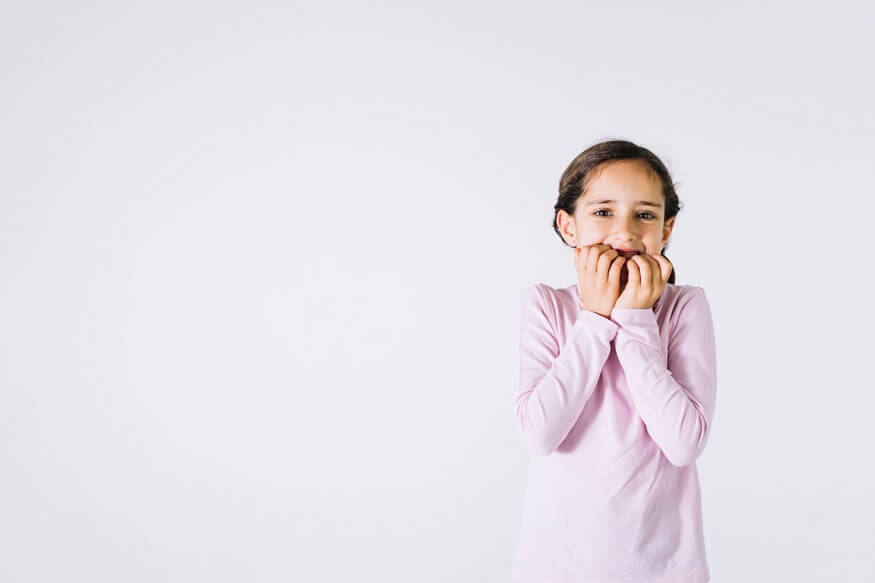Biting is a behaviour often observed in children, especially toddlers, which raises concern for many parents. While this behaviour can be alarming, it is important to understand that it is a typical phase in a toddler’s development. This blog aims to shed light on the reasons behind children biting and advises on how to curb this behaviour.
Also Read: CBT for Kids & Teens: How It Works, Examples, & Effectiveness
Why children bite
it is crucial to understand that biting is a normal part of a child’s developmental journey. Children, particularly toddlers, have limited verbal skills to communicate their feelings, needs, or frustrations. To compensate for their underdeveloped vocabulary and conversation skills, they resort to non-verbal cues — one of which is biting.
However, understanding why children bite is one of the first steps towards addressing this behaviour.
1)For toddlers, biting can serve different purposes. It can be a way to express strong emotions or feelings which they cannot fully communicate verbally, such as frustration, anger, or excitement.
2)When children are faced with overwhelming feelings such as stress or anger and lack the verbal skills to express these emotions, biting offers a satisfactory outlet for their feelings. When a child is fighting over a toy or feels crowded, they may respond by biting to express their discontent.
3)For infants, biting can be a means of exploring their environment. Given that infants learn about the world around them largely through tactile methods, biting serves as a way to become acquainted with new items.
4)Teething: The eruption of new teeth under the gum’s surface can cause significant discomfort for a child, and biting on objects or people provides some relief from the persistent ache. Chewing and gnawing are natural responses to this discomfort, and unfortunately, these actions can sometimes lead to biting.
5)Biting can also be a defence mechanism when feeling threatened or overwhelmed. Children often resort to biting as a defence mechanism during conflicts or stressful situations. This behavioural response, usually seen in ages 2 to 3, manifests when they lack the skills to verbally express emotions.
6)Disruptive changes or transitions in a child’s routine can also induce biting. Activities like starting daycare, moving residences, or even the birth of a sibling can trigger feelings of anxiety or frustration, encouraging biting behaviour.
7)Children also bite as a form of experimentation. Curious about their environment and the reactions of others, a young child might bite just to see what would happen or how their peers or caregivers would react.
8)Biting can also be an attention-seeking behaviour. If a child feels neglected or lacks attention, they may resort to biting because it always elicits a reaction, even though it may be negative.
Considering these reasons, it is clear that biting can be a critical channel of expression for children. However, it is important to address this habit to ensure it does not cause harm.
Also Read: Guide to Braces for Kids – Dental health for kids with braces
Strategies to stop children from biting
Occurrence Prevention Techniques
1)Constant supervision and creating a distraction during situations likely to precipitate biting can be very effective. For instance, if a child tends to bite when they get excited, redirecting their energy to clapping hands or stomping feet might help.
2)Creating Expressive Opportunities: Teaching children to express their feelings such as anger or frustration verbally can eliminate the need to bite. Using simple words like ‘mad’ or ‘upset’ can be helpful for toddlers. Play schools can incorporate teaching emotions, such as anger, joy, and sadness, and applying suitable social behaviours accordingly.
3)Positive reinforcement for good behaviour may also enhance the cessation of biting. Commending children when they manage to go through situations where they could have bitten but did not can be an excellent way to encourage good behaviour.
4)Providing teething toys: Provide safe and suitable teething toys that infants can use to relieve teething discomfort. Teething toys include silicone teethers, which are generally easy to hold and have a soft texture safe for sore gums. Others are wooden teethers, preferred for their natural, chemical-free material. Textured teething rings offer a mix of soft and hard surfaces perfect for a baby’s diverse gum needs during teething. Additionally, teether feeders are also available. They allow parents to place chilled fruit or ice inside, offering both a soothing and nutritional solution. Ultimately, the best teething toy would depend on a child’s preference and developmental stage.
5)Children usually bite to explore their surroundings, relieve teething discomfort, or express intense emotions. By understanding these triggers, acknowledging feelings, creating distractions, encouraging verbal emotional expression, and using positive reinforcement techniques, adults can help children overcome this biting habit.
Also Read: Effective Tips to Treat Mosquito Bites in Toddlers
Intervention techniques
When a child bites, the reaction of adults can very much determine the reinforcement or cessation of the behaviour. Here are some strategies for dealing with biting incidents:
1)Ensure immediate response: Halting this biting behaviour involves understanding, acknowledging, and correctly responding to the emotions that may trigger biting. Understanding why a child might be biting can offer insight into how to prevent it. A calm, clear, and firm reaction from the adults might remind the child that biting is not acceptable. Prompt communication on recognizing inappropriate behaviour and alternative actions is crucial to get a child to stop biting.
2)Empathy: Teach the child to empathise with the bitten child’s pain. Help them understand that biting hurts and they would not like to be bitten either. Calmly, but firmly, tell the child, “No, we do not bite”. Encourage the child to help soothe the person they bit by getting a wet cloth, for example.
3)Reinforce the Message: Make sure to reinforce the message that biting is not acceptable. Books, role-playing, and stories can be an effective tool for teaching this
4)Consult Professionals: If biting continues repeatedly, it may be worth seeking professional advice from a paediatrician or child psychologist.
Also Read: How to Make the Most of Your School Years
Conclusion
Stopping children from biting involves understanding, patience, and consistency. Remember that biting is a common, yet distressing, phase that many children go through. With the techniques above, it should be easier to manage and eventually stop this behaviour in children.










